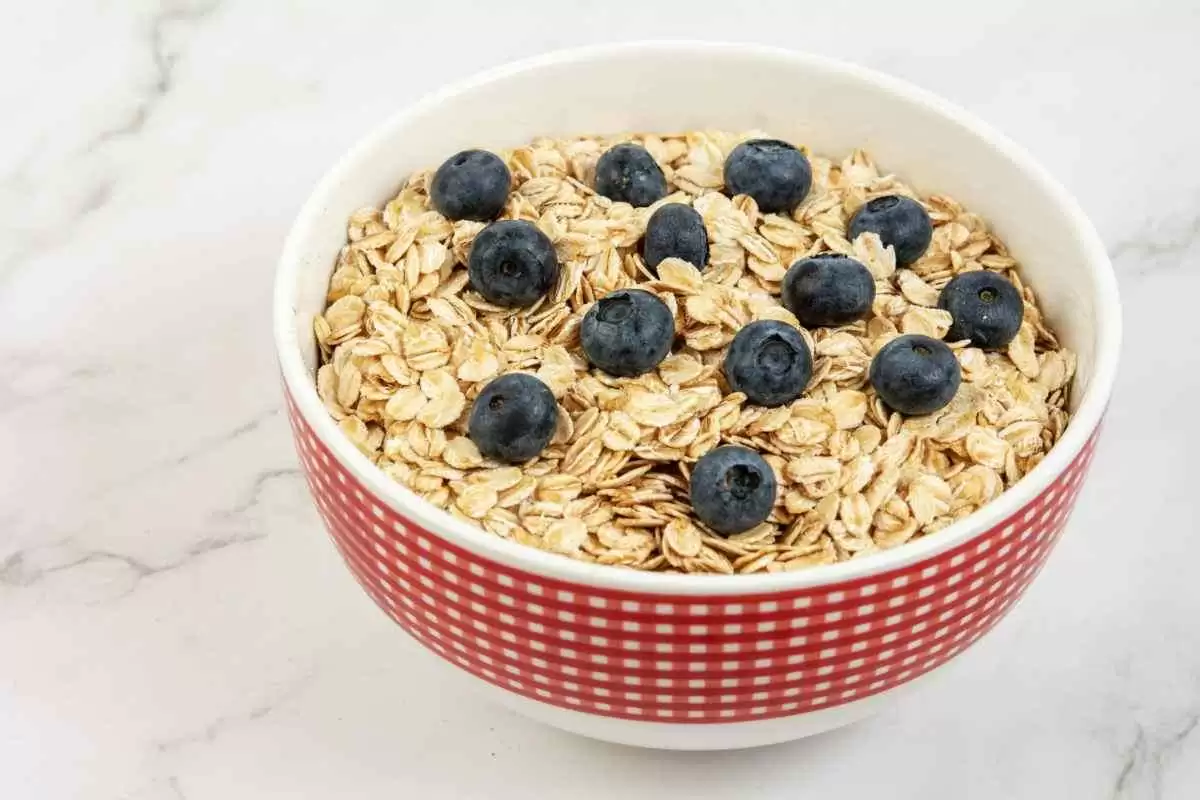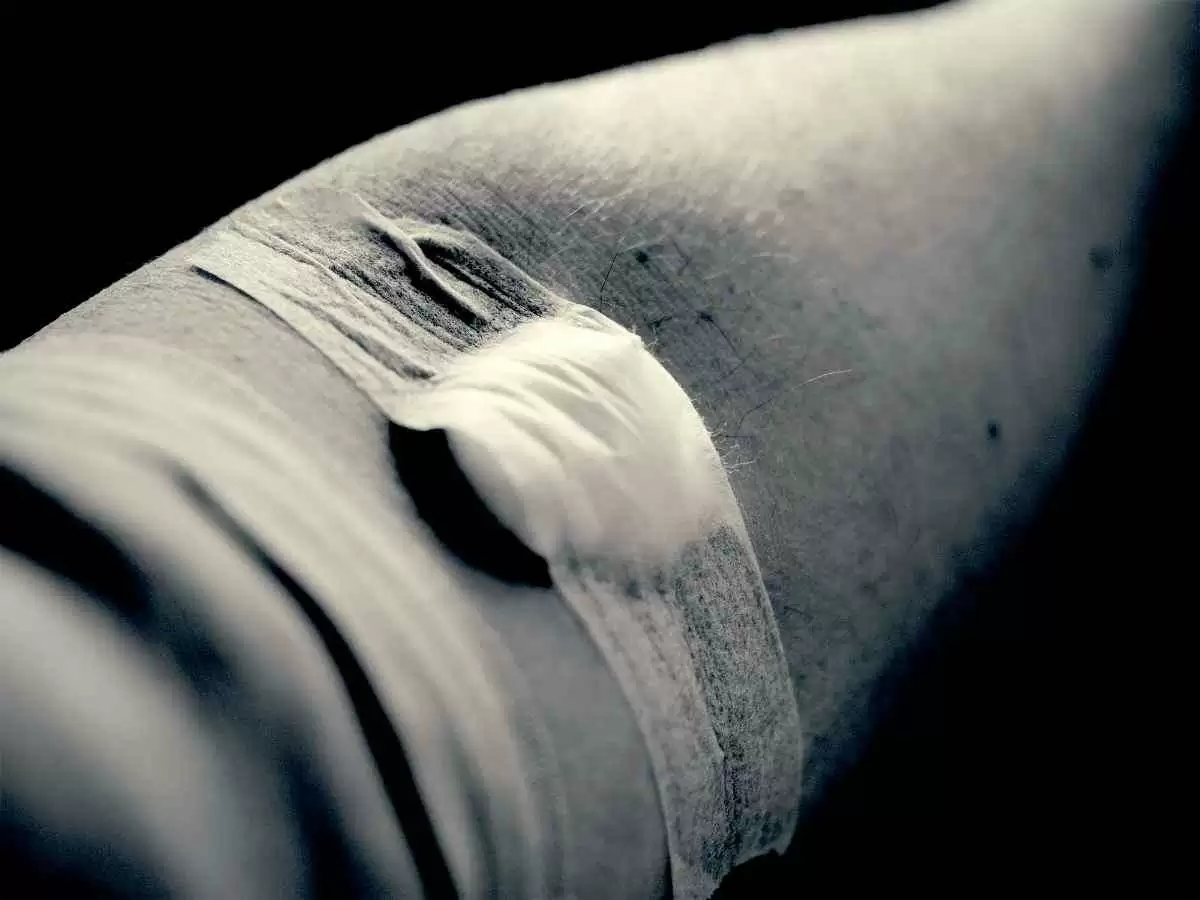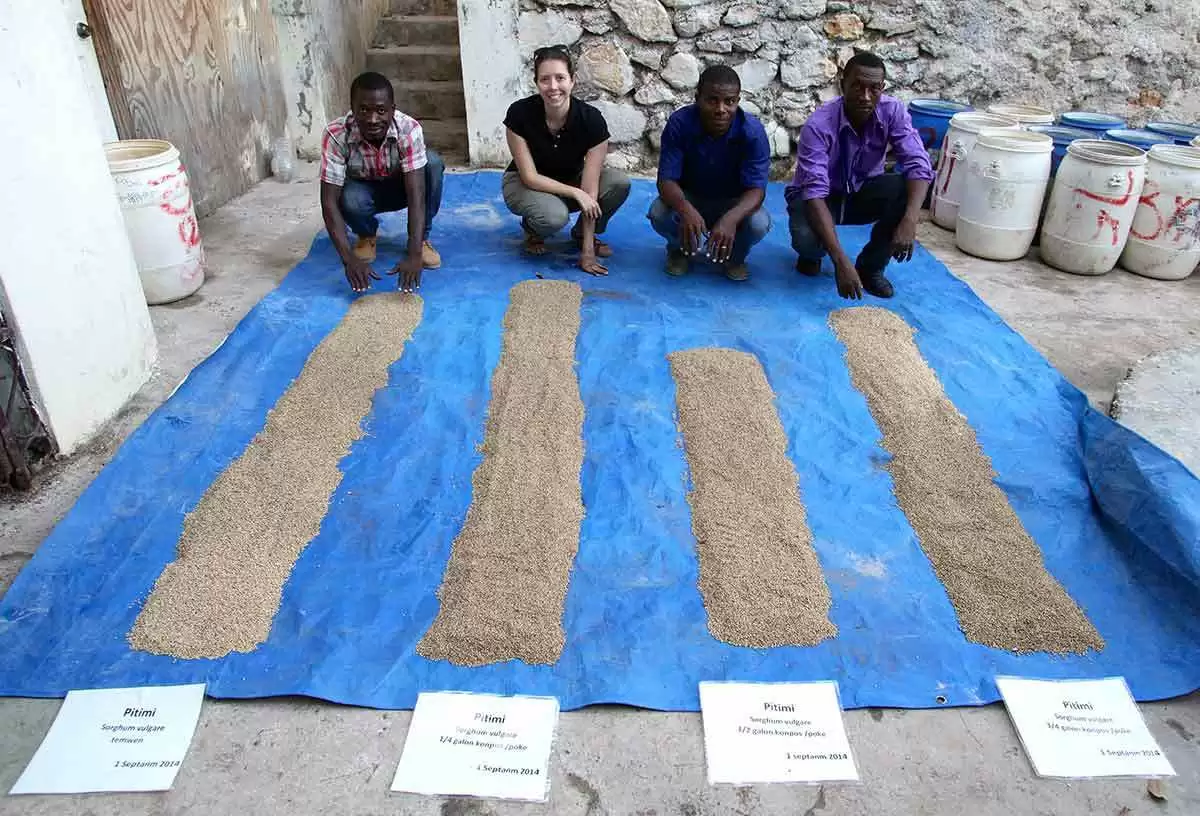-
Welcome to Celiac.com!
You have found your celiac tribe! Join us and ask questions in our forum, share your story, and connect with others.
-
Celiac.com Sponsor (A1):
Celiac.com Sponsor (A1-M):
-
Get Celiac.com Updates:Support Celiac.com!
Search the Community
Showing results for tags 'genetic'.
-
Celiac.com 02/14/2024 - Rising celiac disease rates pose a significant health challenge, yet the environmental triggers behind the rise remain elusive. Among the various potential factors, iron deficiency has emerged as a potential contributor to the development of celiac disease. A recent study, employing Mendelian randomization (MR), sought to investigate the intricate relationship between iron status and the prevalence of celiac disease. Understanding Mendelian Randomization Mendelian randomization (MR) is a powerful method that explores potential causal relationships between an exposure and an outcome. In this case, the researchers delved into the connection between genetic variants associated with iron status and the presence of celiac disease. Research Design The study adopted a two-sample MR approach, utilizing single nucleotide polymorphisms (SNPs) linked to iron status. These SNPs were derived from a meta-analysis of three genome-wide association studies (GWAS). The association between these SNPs and celiac disease was then assessed using GWAS summary statistics from the UK Biobank, which included data from 336,638 white British individuals, 1855 of whom had celiac disease. Key Findings - Higher Iron Status Inversely Related to Risk of Celiac Disease The team identified four SNPs strongly associated with systemic iron status. Notably, these were not linked to known risk factors for celiac disease. The harmonized analysis revealed a compelling association: higher iron status was inversely related to the risk of celiac disease. The odds ratio per one standard deviation increase in serum iron was 0.65, with a 95% confidence interval of 0.47 to 0.91. Crucially, leave-one-out analyses consistently supported these findings, and no single SNP disproportionately influenced the association. Importantly, all three assumptions of MR appeared plausible, strengthening the credibility of the study's conclusions. Conclusion and Implications The study's groundbreaking discovery that genetically lower iron levels are associated with an increased risk of celiac disease holds significant implications for prevention strategies. By shedding light on the potential role of iron status in the development of celiac disease, this research opens avenues for targeted interventions and preventive measures. As the scientific community continues to unravel the complex factors contributing to celiac disease, studies like these pave the way for a deeper understanding of the condition and, ultimately, more effective strategies for its prevention and management. This research not only adds valuable insights to the celiac disease puzzle but also underscores the potential impact of addressing iron status in the broader context of preventive healthcare. Read more in BMJ Open Gastroenterology
- 13 comments
-
- celiac disease
- deficiency
-
(and 4 more)
Tagged with:
-
Celiac.com 07/10/2023 - Previous observational studies have suggested links between migraine, inflammatory bowel disease (IBD), and celiac disease. However, it remained unclear whether these associations were due to shared genetic factors or if there was a causal relationship. Understanding these connections could have implications for treatment and symptom management. A research team recently aimed to investigate the possible genetic and causal connections between migraine, inflammatory bowel disease, and celiac disease. To do this, they conducted a Mendelian randomization study using data from various genome-wide association studies. The Research Team The research team included Nike Zoe Welander MSc, Gull Rukh PhD, Mathias Rask-Andersen PhD, Aster V. E. Harder MSc, MD, The International Headache Genetics Consortium, Arn M. J. M. van den Maagdenberg PhD, Helgi Birgir Schiöth PhD, and Jessica Mwinyi MD, PhD. They are variously affiliated with theDepartment of Surgical Sciences, Uppsala University, Uppsala, Sweden; the Department of Immunology, Genetics and Pathology, Science for Life Laboratory, Uppsala University, Uppsala, Sweden; the Department of Human Genetics, Leiden University Medical Center, Leiden, the Netherlands; and the Department of Neurology, Leiden University Medical Center, Leiden, the Netherlands. The Study - Statistical Analyses to Assess Genetic Correlation and Causality Their study analyzed data from over 60,000 migraine cases, 25,000 inflammatory bowel disease cases, and 12,000 celiac disease cases, along with their respective control groups. Different subtypes of migraine and inflammatory bowel disease were also considered separately. The researchers used specific statistical analyses to assess genetic correlation and causality. The Findings - No Genetic Correlation The findings showed no genetic correlation between migraine and inflammatory bowel disease or celiac disease when all participants with migraine were analyzed together. There was also no evidence of inflammatory bowel disease or celiac disease causing migraine, or migraine causing inflammatory bowel disease or celiac disease. Causal Associations Between Celiac Disease and Migraine However, the study did indicate some potential causal associations between celiac disease and migraine with or without aura, as well as between migraine without aura and ulcerative colitis. It is important to note that these associations did not reach statistical significance after adjusting for multiple testing. In conclusion, this study did not find evidence of a shared genetic basis or a causal relationship between migraine and either inflammatory bowel disease or celiac disease. Although there were indications of potential causal associations with specific subtypes of migraine, further research is needed to confirm these findings and explore the underlying mechanisms. Read more in headachejournal.onlinelibrary.wiley.com
- 3 comments
-
- causal
- celiac disease
- (and 6 more)
-
Celiac.com 07/15/2023 - Summary of the “Pathogenesis and Epidemiology of Celiac Disease” Clinical Symposium sponsored by the American Gastroenterological Association at the Digestive Disease Week international conference, San Francisco, May 22, 2002. Dr. Thomas T. MacDonald of the University of Southampton (UK) School of Medicine discussed new insights into the pathogenesis of celiac disease and the role that the DQ2 (gene) molecule plays in controlling the T-cells of the small intestinal mucosa to produce the lesion or flat mucosa. He explained that the lesion is created when the T-cell immune response in the gut wall results in changes in the gut shape on a microscopic level from tall villi and short crypts to a flat mucosa with an increase in mucosa thickness. Although it was once believed that the damaged gut would quickly return to its normal shape on a gluten-free diet, Dr. MacDonald stated that the flat mucosa appears to be a stable structure. It may therefore take a celiac patient a long time to get better due to the length of time it takes for the gut to revert back to its normal shape. Dr. MacDonald explained that gliadin peptides associate with DQ2 and DQ8 HLA molecules and put themselves into the grooves so that they are seen by the T-cells. Researchers now believe that Tissue Transglutaminase (tTg) alters the gliadin peptide so that it binds to DQ2. Once bound to the HLA, the altered gliadin peptide controls the T-cell response. Dr. MacDonald also described the case of a woman with cancer who was treated with interferon (IFN). The IFN-alpha used to treat her cancer may have triggered her case of clinical celiac disease. IFN-alpha can stimulate T-cells and a viral infection could activate IFN-alpha. Dr. Alessio Fasano, Co-Director of the University of Maryland Center for Celiac Research, discussed the prevalence of celiac disease on a local and worldwide scale. Dr. Fasano said that in the 1970’s, celiac disease was thought to be limited to the pediatric population, but since 1998 there has been a surge of adult cases. He believes that adult celiac disease in the U.S. has been overlooked due to the fact that adults tend to present more atypical symptoms. Also, pathologists need to be better trained to not overlook the majority of patients with only partial villous atrophy. He believes that in the vast majority of cases a person with celiac disease will not see a gastroenterologist, so other physicians and specialists need to have a heightened awareness of the disease. On a worldwide scale Dr. Fasano stated that the overall prevalence of celiac disease is about 1 in 266, on which he commented: "on a global scale, this is by far the most frequent genetic disease of human kind." Dr. Ciaran Kelly, of the Beth Israel Deaconess Medical Center (Boston), had interesting insights into both celiac disease and refractory sprue. Dr. Kelly explained that his responsibility when seeing a patient with possible refractory sprue is to first confirm that the patient really has celiac disease and that they are adhering to a gluten-free diet. Dr. Kelly explained that some patients would “prefer an iron shot” than have to adhere to the diet. Differences from patient to patient in their sensitivity to gluten can also affect their adherence to the diet. According to Dr. Kelly, in celiac disease the lamina propria lymphocytes are stimulated by gluten to mediate the disease, whereas in refractory sprue, intraepithelial lymphocytes no longer require gluten to cause damage. Essentially "they’re on auto-pilot," but he emphasizes that refractory sprue is a rare disease and doctors should refer patients to knowledgeable and competent dieticians for dietary management. Dr. Kelly said that patients who adhere to a gluten-free diet but do not respond to it should also be evaluated for other disorders that can masquerade as celiac disease, especially if the patient is IgA endomysial antibody (EmA) negative or HLA DQ2 or DQ8 negative. Not every flat mucosa is celiac disease, but could instead be a differential diagnosis such as cow’s milk protein intolerance. Other unusual immunological disorders could also be mistaken for celiac disease. Doctors should consider these if the patient’s IgA EmA or tTg antibody tests were negative at diagnosis. HLA typing should also be considered in this case, after other possibilities have been eliminated and the patient is not responding to a gluten-free diet. If a patient’s HLA DQ2/DQ8 test is negative the likelihood that they have celiac disease is much lower. He advised that antibody blood tests for follow-up were helpful but not to be relied upon. Dr. Kelly also emphasized that patients are being seen more frequently who have subtle manifestations of celiac disease and who were previously diagnosed or misdiagnosed with irritable bowel syndrome and other disorders. Some patients with celiac disease may show improvement in their biopsy and blood test results, but their symptoms may still persist. He emphasized that doctors need to be aware that just because a patient has celiac disease it does not mean that they do not also have another disorder.
-
- celiac disease
- conference
-
(and 4 more)
Tagged with:
-
Celiac.com 07/01/2021 - We get a lot of questions from celiac community members wondering about various aspects of celiac disease. One question we see a lot is about how genetic makeup influences the odds of developing celiac disease. Specifically, what are the odds of developing celiac disease based on HLA-DQA/DQB genotypes? Here's a breakdown of the odds by genotype combination. The odds of developing celiac disease based on HLA-DQA/DQB genotypes is as follows: DQ2+DQ8 1:7 (14.3%) DQ2+DQ2 OR DQ2 Homozygous DQB1*02 1:10 (10%) DQ8+DQ8 1:12 (8.42%) DQ8+DQ8*02 1:24 (4.2%) Homozygous DQB1*02 1:26 (3.8%) DQ2 only 1:35 (2.9%) DQ8 only 1:89 (1.1%) General Population - Genotypes unknown 1:100 (1%) ½ DQ2*DQB1*02 1:210 (0.5%) ½ DQ2*DQA1*05 1:842 (0.05%) No HLA-DQA/DQB susceptible alleles 1:2518 (0.04%) Testing for celiac disease should be done using FDA-approved HLA test kits. HLA-DQA/DQB genotyping typically provides detection of DQ2 (DQA1*0501, DQA1*0505, and DQB1*0201/*0202) and DQ8 (DQB1*0302) For example: HLA-DQ2(DQA1*05/DQB1*02) Positive or Negative HLA-DQ8(DQA1*03/DQB1*0302) Positive or Negative A testing report typically includes DQ2, DQ8, half DQ2, homozygosity for DQB1*02, and complete DQA and DQB genotypes, along with an easy-to-interpret risk assessment.
- 6 comments
-
- celiac disease
- genetic
-
(and 5 more)
Tagged with:
-
Celiac.com 01/09/2023 - Psoriasis is one of several skin conditions long associated with celiac disease. Several studies have found connections between psoriasis and celiac disease, but so far no study has shown a causal connection between these two autoimmune conditions. A new study shows that celiac disease patients face a higher risk of psoriasis, but not vice versa. Here's what they found. Genetic Study A team of researchers recently set out to explore the causal link between psoriasis and celiac disease with bidirectional 2-sample Mendelian Randomization (MR) study. The research team included Lin Li, Lixin Fu, Liwen Zhang & Yanyan Feng. They are affiliated with theDepartment of Dermatology, Chengdu Second People’s Hospital, Chengdu, Sichuan, China. The Psoriasis-Celiac Disease Connection The team set out to extract eligible instrument variables with genome-wide significance. To do so, the team used data from the published genome-wide association studies (GWAS) of the European population. They then performed sensitivity, post-MR, and inverse variance weighted (IVW) analyses. The MR analyses showed that genetically doubling the odds of celiac disease would increase the risk for psoriasis. Subsequent sensitivity analyses reinforced those results. Higher Psoriasis Risk for Celiac Patients However, the team's data showed that genetically determined psoriasis was not connected with the risk for celiac disease. This study offers new genetic evidence that celiac patients face an increased risk of psoriasis, while psoriasis patients face no higher celiac risk. For this reason, the team advises clinicians to be aware of the connections, and to closely watch for any psoriasis-associated skin symptoms in celiac patients, or in patients with celiac symptoms. This study offers another valuable insight into the many connections between celiac disease and the risk of other auto-immune conditions, and perhaps supports the idea that all non-genetically determined psoriasis patients should be screened for celiac disease. Read more at Scientific Reports volume 12, Article number: 21508 (2022)
-
- celiac disease
- connection
-
(and 5 more)
Tagged with:
-
Ten Facts About Celiac Disease Genetic Testing
Dr. Scot Lewey posted an article in Celiac Disease Basics
Celiac.com 04/16/2019 (originally published 04/24/2008) - Genetic tests for celiac disease and gluten sensitivity are readily available. Testing can be performed on either blood and mouth swab samples. Tests can be done at home and mailed to the lab for analysis. A good testing laboratory will provide an accurate prediction of celiac disease risk, and will also provide information about the statistical risk to your children, your likelihood of developing more severe celiac disease, whether one or both of your parents had the risk gene, and for some laboratories, you may determine your risk of gluten sensitivity without celiac disease. DQ2 & DQ8 Not the Whole Story About 95% of celiacs carry HLA-DQ2; while about 25% carry HLA-DQ8. If any part of the high risk gene patterns DQ2 and DQ8 is missing, then the likelihood of that person getting celiac disease is 99.9% AGAINST. Negative Genetic Test Only Part of the Story However, "negative celiac genetic testing” is not sufficient for entirely ruling out celiac disease. To definitively declare negative celiac genetic tests requires the laboratory to test for the presence or absence of the entire HLA DQ genetic pattern, including both alpha and beta subunits. The DQ genetic patterns DQ2 and DQ8 have two subunits, but many laboratories only test for the beta subunit. Few labs test for both. This DQ typing is complicated and difficult to understand even by physicians and scientists. I have written an updated detailed review that appears in the Spring 2008 issue of Scott-Free newsletter published by celiac.com. No DQ2 & DQ8 Can Still Mean Gluten Problems Data collected by Dr. Ken Fine of Enterolab supports the fact that the absence of DQ2 and DQ8 does not exclude the risk of being gluten intolerance or sensitive, though it is now looks likely that one or both of those genetic white blood cell patterns are required for celiac disease or celiac sprue to develop. However, there is a new study that reports that being negative for DQ2 and DQ8 does not completely exclude the possibility of celiac disease, especially in men. Previous studies have documented blood test negative celiac sprue, which is also more common in elderly men with long-standing severe disease. Since DQ2 or DQ8 is almost universally present where tissue transglutaminase and anti-endomysial antibodies are present it is not surprising that individuals without DQ2 or DQ8 with negative blood tests are being reported that meet criteria for celiac disease. These new studies are also providing further information that the genetics of celiac is gender specific. If you are a man, your risk of celiac disease may be higher than a woman if you don't have the classic genetic patterns. Again, in this situation your blood tests may be negative. If you are a woman, the risk for Celiac disease is generally higher than a man, especially if you have received the at risk gene from your father instead of your mother. Celiac disease is arguably the most common autoimmune disease. It is very common. It is easily treated. It affects 1/100 people worldwide. However, most people with celiac disease (~90%) are unaware, undiagnosed or misdiagnosed. Most adults finally diagnosed with celiac disease have suffered at least 10-11 years, and have seen 3 or more doctors. Genetic testing can be extremely helpful in determining your risk for celiac disease, potential severity, and risk for family members. Don't be one of those whose diagnosis is missed or needlessly delayed for over a decade. Get tested! Learn about the genetic tests for celiac disease and if necessary educate your doctor about this testing. Important Facts About Celiac Disease: Genetic Testing Can Determine Celiac Risk Celiac genetic tests can be done on blood or a mouth swab sample but your doctor may be unaware of the tests, not know how to order them, or know how to interpret the results. Diet Will Not Change Genetic Test Results Genetic testing is not affected by diet. You can be eating gluten or on a gluten-free diet. Unlike blood tests for celiac disease antibodies, which require a patient to be eating gluten, genetic tests can be done whether or not the person being tested is eating wheat or gluten. Diagnostic Codes Can Help Secure Insurance Approval Many insurance companies pay for celiac genetic testing. Most that pay require pre-authorization. The following diagnostic codes are helpful when requesting insurance coverage: 579.0 (celiac disease); V18.59 (family history of GI disease); and/or V84.89 (genetic susceptibility to disease). Some Genetic Labs Perform Limited Tests Many laboratories do not perform the all of the necessary components of the test to completely exclude the possible genetic risk of celiac disease and most don't test for or report the other gluten sensitive DQ patterns. Before you accept that have a negative test you need to know if your test included both the alpha and beta subunits of HLA DQ or did they just perform the beta typing. Negative Results Can Still Mean Celiac in Rare Cases In rare cases, some people, especially men, may have a negative genetic test and still have celiac disease. As with blood tests, men more commonly have negative genetic tests, especially older men with long-standing severe disease. DQ Type Can Influence Celiac Risk and Severity Both the DQ type, and number of copies you have, matter when determining not only your risk, but also the possible severity of celiac disease. Two copies of DQ2 carries more risk than one copy of DQ8 or only partial DQ2. Even a single copy of DQ2 alpha subunit ("half DQ2 positive") carries risk for celiac disease, but most of the commonly used laboratories for Celiac genetics do not test for or report the presence of this component of the celiac genes. Negative DQ2 and DQ8 Can Still Mean Gluten Intolerance The absence of at risk genes DQ2 and/or DQ8 does not exclude the possibility of being gluten intolerant or sensitive. You may respond to a gluten free diet, even if you don't have DQ2 or DQ8, or true autoimmune celiac disease. No Prescription Needed for Genetic Celiac Testing You can get genetic testing without a doctor's order and the tests can be done without having blood drawn or insurance authorization if you are willing to pay between $99-300 (www.enterolab.com). Genetic Testing Labs for Celiac Disease Laboratories in the U.S. that are known to offer complete alpha and beta subunit genetic testing include Kimball Genetics, Prometheus, and LabCorp. Bonfils, Quest and Enterolab only test for the beta subunit portions and therefore their test can miss part of a minor alpha subunit that carries a risk of celiac disease. A negative DQ2 and DQ8 report from these labs may not necessarily be truly negative for the risk of celiac disease. Celiac Genetic Testing References and Resources: HLA-DQ and Susceptibility to Celiac Disease: Evidence for Gender Differences and Parent-of-Origin Effects. Megiorni F et al. Am Journal Gastroenterol. 2008;103:997-1003. Celiac Genetics. Dr. Scot Lewey. Scott-Free, Spring 2008.- 43 comments
-
- celiac
- celiac disease
- (and 4 more)
-
Celiac.com 07/11/2022 - With a low carbon footprint, numerous health and nutritional benefits, oat has attracted attention for its potential to replace animal-based food products. However, efforts to untangle its complex evolutionary history and functional gene dynamics have been slowed by the absence of a fully annotated reference genome. Cultivated oats (Avena sativa L.) are among the oldest domesticated crops, after wheat, emmer and barley. Thought to have been domesticated more than 3,000 years ago in in Anatolia, in modern day Turkey, after oat plants were discovered growing as weeds in wheat, emmer and barley fields. Avena sativa L. is an allohexaploid, that maps out as AACCDD, 2n = 6x = 42. A team of researchers recently developed a high-quality reference genome of A. sativa and close relatives of its diploid (Avena longiglumis, AA, 2n = 14) and tetraploid (Avena insularis, CCDD, 2n = 4x = 28) progenitors. The research team included Nadia Kamal, Nikos Tsardakas Renhuldt, Johan Bentzer, Heidrun Gundlach, Georg Haberer, Angéla Juhász, Thomas Lux, Utpal Bose, Jason A. Tye-Din, Daniel Lang, Nico van Gessel, Ralf Reski, Yong-Bi Fu, Peter Spégel, Alf Ceplitis, Axel Himmelbach, Amanda J. Waters, Wubishet A. Bekele, Michelle L. Colgrave, Mats Hansson, Nils Stein, Klaus F. X. Mayer, Eric N. Jellen, Peter J. Maughan, Nicholas A. Tinker, Martin Mascher, Olof Olsson, Manuel Spannagl, and Nick Sirijovski. Their team recently revealed the mosaic structure of the oat genome, trace large-scale genomic reorganizations in the polyploidization history of oat and illustrated a breeding barrier connected to the genome structure of oat. Their new paper offers detailed analyses of gene families tied to human health and nutrition, and adds to the body of evidence that supporting non-wheat contaminated oats as safe for celiacs on gluten-free diets. Very importantly, the team's mapping-by-sequencing of an agronomic trait related to water-use efficiency creates a roadmap for potentially creating strains of more water efficient oats and other cereals. In addition to improving knowledge of basic oat biology, and helping researchers better explore cereal genomes, the team's mapping resource for the Avena genus of oats will speed up genomics-assisted breeding and reanalysis of quantitative trait studies. Read more in Nature volume 606, pages113–119 (2022) The research team is variously affiliated with the Plant Genome and Systems Biology, German Research Center for Environmental Health, Helmholtz Zentrum München, Neuherberg, Germany; ScanOats Industrial Research Centre, Department of Chemistry, Division of Pure and Applied Biochemistry, Lund University, Lund, Sweden; the Molecular Cell Biology, Department of Biology, Lund University, Lund, Sweden; the Australian Research Council Centre of Excellence for Innovations in Peptide and Protein Science, School of Science, Edith Cowan University, Joondalup, Western Australia, Australia; the Agriculture and Food, Commonwealth Scientific and Industrial Research Organisation, St Lucia, Queensland, Australia; the Department of Gastroenterology, Royal Melbourne Hospital, Parkville, Victoria, Australia; the Department of Microbial Genomics and Bioforensics, Bundeswehr Institute of Microbiology, Munich, Germany; the School of Life Sciences Weihenstephan, Technical University of Munich, Freising, Germany; the Plant Biotechnology, Faculty of Biology, University of Freiburg, Freiburg, Germany; the Plant Gene Resources of Canada, Agriculture and Agri-Food Canada, Saskatoon, Saskatchewan, Canada; the Department of Chemistry, Centre for Analysis and Synthesis, Lund University, Lund, Sweden; the Plant Breeding, Lantmännen, Svalöv, Sweden; the Leibniz Institute of Plant Genetics and Crop Plant Research (IPK), Seeland, Germany; the Research and Development Division of PepsiCo in St Paul, MN, USA; the Ottawa Research and Development Centre, Agriculture and Agri-Food Canada, Ottawa, Ontario, Canada; the Department of Plant and Wildlife Sciences, Brigham Young University, Provo, UT, USA; the Department of Plant and Wildlife Sciences, Brigham Young University, Provo, UT, USA; the German Centre for Integrative Biodiversity Research (iDiv), Halle-Jena-Leipzig, Leipzig, Germany; the CropTailor AB, Department of Chemistry, Division of Pure and Applied Biochemistry, Lund University, Lund, Sweden.
- 6 comments
-
- avena sativa
- geneome
-
(and 5 more)
Tagged with:
-
Celiac.com 05/09/2022 - Data from gene expression, lipidomic and growth impairment indicate that celiac disease begins long before the body starts to have an immune response to gluten. The influence of gluten intake in the first years of life as a potential risk factor for celiac disease is currently debated among researchers. A team of researchers recently set out to estimate the risk of developing celiac disease based on the amount of gluten intake and the serum inflammatory profile in genetically predisposed infants. The research team included Auricchio Renata, Calabrese Ilaria, Galatola Martina, Cielo Donatella, Carbone Fortunata, Mancuso Marianna, Matarese Giuseppe, Troncone Riccardo, Auricchio Salvatore & Greco Luigi They are variously affiliated with the Department of Translational Medical Science, University Federico II, Via S. Pansini 5, 80131, Naples, Italy; the European Laboratory for Food Induced Diseases, University Federico II, Via S. Pansini 5, 80131, Naples, Italy; the Department of Clinical Medicine and Surgery, University Federico II, Naples, Italy; the Laboratory of Immunology, Institute for Experimental Endocrinology and Oncology, National Research Council (IEOS-CNR), Naples, Italy; the Neuroimmunology Unit, IRCCS Fondazione Santa Lucia, Rome, Italy; and the the Department of Molecular Medicine and Medical Biotechnology, University Federico II, Naples, Italy. The team evaluated an Italian cohort of children at risk for celiac disease, and enrolled twenty-seven children who developed celiac disease, along with fifty-six control subjects, matched by sex and age. The team also conducted a dietary interview at 9, 12, 18, 24 and 36 month intervals. They assessed serum levels of cytokines INFγ, IL1β, IL2, IL4, IL6, IL10 IL12p70, IL17, and TNFα, at four and thirty-six months. They found that infants who went on to develop celiac disease by six years of age showed increased serum cytokine levels at four months of age before gluten introduction. Elevated cytokines included INFγ, IL1β, IL2, IL6, IL10, IL12p70 and TNFα. Children who later developed celiac disease consumed substantially more gluten in their second year of life than the controls. For those children, gluten intake in the second year of life was strongly correlated with serum cytokines INFγ, IL2, IL4, IL12p70, IL17 at thirty-six months. The dietary pattern of infants who developed celiac disease was marked by high consumption of biscuits and fruit juices and low intake of milk products, legumes, vegetables and fruits, which may invite questions about pre-celiac gut microbiota health in these subjects. The researchers found that genetically predisposed infants who developed celiac disease showed a unique serum cytokine profile at 4 months before gluten consumption. In these children, gluten intake was strongly correlated with an inflammatory profile in serum cytokines at thirty-six months. This is one of the first studies to demonstrate such a clear relationship between cytokine profiles and infant gluten intake in advance of the development of celiac disease. Further study could help to develop preventative screening that Read more in Scientific Reports volume 12, Article number: 5396 (2022)
-
- at-risk
- celiac disease
-
(and 7 more)
Tagged with:
-
Celiac.com 12/15/2021 - The journey from symptoms to questions, to the search for a proper celiac disease diagnosis can be long, confusing, and frustrating. For many people with celiac disease, the pre-diagnosis phase is the most challenging part of the journey. A glance at our popular online forum shows that questions about pre-diagnosis, testing and symptoms of celiac disease abound among celiac sufferers. To help make the journey a bit easier, we've put together this list of helpful things to know about per-diagnosis and testing for celiac disease. Celiac Disease Pre-Diagnosis & Testing Celiac Symptoms We'll start first with symptoms, because, for most patients, celiac symptoms are often what get the ball rolling toward testing and diagnosis. Classic celiac-associated gastrointestinal symptoms include malnutrition, diarrhea, abdominal pain, and bloating, weight-loss, or low body weight, among others. Interestingly, most people with celiac disease show no symptoms, but are diagnosed on the basis of referral for elevated risk factors. For people who do show symptoms, it is increasingly common to find atypical symptoms, such as being overweight, especially in children. In fact, most children with celiac disease now show atypical symptoms. An absence of symptoms, or the presence of atypical symptoms can make diagnosing celiac disease even more difficult, as patients often need a referral from a physician, who may have trouble justifying one if she can't point to clear symptoms. To make matters worse, celiac disease is often confused with numerous other diseases, which can cause delayed diagnosis, or even misdiagnosis. Celiac Disease Pre-Diagnosis When people talk about "pre-diagnosis" of celiac disease, they are usually talking about the testing phase. Usually, a person will have symptoms of one sort or another that will lead them to a physician, who will then request testing for celiac disease antibodies. In some cases, confirmation by biopsy is still the go-to procedure for officially confirming celiac disease, however, in Europe they are now diagnosing celiac disease via a blood test only when it detects a 10-fold increase in IgA antitissue transglutaminase (tTG) antibody levels above the reference range, in combination with EMA positivity, without the need for a duodenal biopsy. So in many cases, celiac disease can now be diagnosed by blood test alone, without the need for a follow-up biopsy, especially in children, first-degree family relatives, and even in many adults. Celiac Disease Blood Antibody Testing Traditionally, doctors will order a test to measure blood levels of anti-transglutaminase antibodies, or tTG2, which are higher in people with celiac disease. tTG2 proteins are among the proteins that trigger the immune reaction the causes inflammation when celiac eat wheat, rye, or barley. Celiacs have hundreds times more tTG proteins than non-celiacs. Testing begins with a test called Immunoglobulin A (IgA). If the results are normal, then a Tissue transglutaminase, antibody, IgA test is given. A weak positive should lead to the following tests: Endomysial antibodies (IgA) and; Gliadin (deamidated) antibody, IgA. If the initial Immunoglobulin A (IgA) test is low, then these two tests should be done: Tissue transglutaminase antibodies, IgA and IgG profle. Gliadin (deamidated) antibodies evaluation, IgG and IgA. If the initial Immunoglobulin A (IgA) test is deficient then these two tests should be done: Tissue transglutaminase (tTG) antibody, IgG. Gliadin (deamidated) antibody, IgG. In fact, trials show the tTG blood test to be 95 percent sensitive (meaning it detects celiac disease 95 times out of 100), and 95 percent specific (meaning it gives a false positive result just 5 times out of 100). A Possible Future for Celiac Blood Tests One Blood Test Can Now Diagnose Celiac Disease without Biopsy New Screening Method Offers Faster and Easier Detection of Celiac Antibodies FDA Approves New Test for Celiac Disease A New York startup company, Aesku NY, has received FDA approval for tests to detect celiac disease. Patients who screen positive would require further testing for a specific diagnosis. However, the tests are designed to be cost effective, and efficient, potentially increasing the availability of a reliable screening method for diseases that are best caught and treated early. Blood Test Results Normally the results you get will be either negative, weak positive, or positive. Any positive blood test, even if others are negative, could indicate celiac disease. Read more about the Interpretation of Celiac Disease Blood Test Results Confirmation In some cases, biopsy is still the go-to procedure for officially confirming celiac disease. This is the case even in Europe when tTG levels are below 10x the reference range for celiac disease. There is some research to indicate that children, on average, may have less villi damage than adults, which is why blood test results are so important. Genetic Testing Genetic tests for celiac disease and gluten sensitivity are readily available. Testing can be performed on either blood or mouth swab samples. Tests can be done at home and mailed to the lab for analysis. A good testing laboratory will provide an accurate prediction of celiac disease risk, and will also provide information about the statistical risk to your children, your likelihood of developing more severe celiac disease, whether one or both of your parents had the risk gene, and for some laboratories, you may determine your risk of gluten sensitivity without celiac disease. Get the Facts About Celiac Disease Genetic Testing Genetic Test Results No DQ2 & DQ8 Can Still Mean Non-Celiac Gluten Sensitivity (NCGS) Data collected by Dr. Ken Fine of Enterolab supports the fact that the absence of DQ2 and DQ8 does not exclude the risk of gluten intolerance or gluten sensitivity, though it now looks likely that one or both of those genetic white blood cell patterns are required for celiac disease to develop. DQ Type Can Influence Celiac Risk and Severity Both the DQ type, and number of copies you have, help to determine the risk, and also the potential severity of celiac disease. Two copies of DQ2 carries more risk than one copy of DQ8 or only partial DQ2. Even a single copy of DQ2 alpha subunit ("half DQ2 positive") carries risk for celiac disease, but most of the commonly used laboratories for Celiac genetics do not test for or report the presence of this component of the celiac genes. The odds of developing celiac disease based on HLA-DQA/DQB genotypes is as follows: DQ2+DQ8 1:7 (14.3%) DQ2+DQ2 OR DQ2 Homozygous DQB1*02 1:10 (10%) DQ8+DQ8 1:12 (8.42%) DQ8+DQ8*02 1:24 (4.2%) Homozygous DQB1*02 1:26 (3.8%) DQ2 only 1:35 (2.9%) DQ8 only 1:89 (1.1%) General Population - Genotypes unknown 1:100 (1%) ½ DQ2*DQB1*02 1:210 (0.5%) ½ DQ2*DQA1*05 1:842 (0.05%) No HLA-DQA/DQB susceptible alleles 1:2518 (0.04%) Testing for celiac disease should be done using FDA-approved HLA test kits. HLA-DQA/DQB genotyping typically provides detection of DQ2 (DQA1*0501, DQA1*0505, and DQB1*0201/*0202) and DQ8 (DQB1*0302) For example: HLA-DQ2(DQA1*05/DQB1*02) Positive or Negative HLA-DQ8(DQA1*03/DQB1*0302) Positive or Negative Conclusion For anyone in the pre-diagnosis phase of suspected celiac disease, the keys to effective screening and diagnosis lie in testing and diagnosis, with or without biopsy. If you have questions about specific issues, be sure to check into our celiac disease forum.
- 3 comments
-
- biopsy
- blood tests
- (and 7 more)
-
Celiac.com 11/03/2021 - Sorghum is an ancient gluten-free grain thought to be native to Africa. Sorghum is prized for its drought hardiness, and thrives in places where seasonal drought conditions are common, such as northern Australia, where it is the main summer crop. In fact, sorghum is Australia's third largest grain crop. Sorghum has a lot going for it. It's high in proteins and minerals. It's naturally gluten-free. Its grains are also notoriously small, which is a problem on numerous levels. Now scientists have cracked the genetic code that will help them grow more and bigger sorghum in Australia, while avoiding genetic modification. Because sorghum grains are small, they are relatively difficult to process. In grains, bigger is better because bigger grain means less husk and more useful amounts of the grain for each kernel. "Those two things together, grain number and grain size, are what makes up yield and sorghum farmers are interested in yield," says UQ professor David Jordan. "The other reason (grain size) is important is farmers get penalized if they have small grains, because for feeding animals, small grains...don't get broken and that breaking is very important to use the starch that's in that grain." In the past, when plant breeders tried to grow bigger grains, they got fewer of them. That problem caught the attention of Jordan and his team at the Queensland Alliance for Agriculture and Food Innovation (QAAFI). Jordan and his colleagues, including Research Fellow Dr Yongfu Tao, set out to map of sorghum's genome, looking to find the genes that control grain size, and to separate them from the genes that control for the number of grains. "What we're doing is searching through sorghum lines from around the world that have a range of different characteristics and genes that are not present in elite commercial cultivars," he said. "Some are very large, double the size of current commercial grains. There's a lot of genetic potential there." The team mapped the genome and found 125 areas where the DNA sequence was tied to grain size and response to environmental conditions. Mapping the genome and isolating genes responsible for grain size, will allow plant breeders to grow bigger grains while still getting the same number. That means that a gluten-free grain crop that is not widely grown, may become much more widespread, and soon be appearing in more gluten-free flours, cereals and pastas. Read more at ABC.net
-
Celiac.com 06/26/2007 - The results of a study recently published in the online science journal Nature Genetics have revealed a previously unknown genetic risk factor for celiac disease. An international team of researchers set out to study the genetic causes of intestinal inflammatory disorders. When the study began, it was well known that individuals with celiac disease have specific tissue types that identify wheat proteins. Why healthy individuals with the same tissue type failed to develop celiac symptoms or celiac disease remained unknown, and was a key question the team set out to answer. The team was led David van Heel, Professor of Gastrointestinal Genetics at Queen Mary, University of London. The Human Genome Project and the Hap Map Project played key support roles in the study. The results show that a protective DNA sequence in a specific gene segment, generally found in healthy individuals are missing in people with celiac disease. The research team evaluated genome data of 778 individuals with celiac disease and 1,422 controls non-celiacs within the British, Irish and Dutch populations. Key DNA Sequence Missing in Celiacs Researchers discovered that, compared to people with celiac disease, healthy people more commonly have a DNA sequence in the interleukin-2 and interleukin-21 gene region that protects against celiac disease. Interleukin-2 and interleukin-21 are cytokine proteins that are secreted by white blood cells, and which control inflammation. In people with celiac disease, the protective DNA sequence most likely leads to lesser amounts of these cytokines being produced, which weakens the defense against intestinal inflammation. Breakthrough in Better Understanding Risk Factors for Development of Celiac Disease About 1 in 133 people develop the disease, but, so far, predicting those at risk to develop the disease has been haphazard at best. Present methods of genetic testing can only narrow down the search to about 30% of the general population. These results give doctors a means to discover what further genetic risk factors leave people vulnerable to developing celiac disease. Queen Mary, University of London Press Release - Public release date: 10-Jun-2007 health writer who lives in San Francisco and is a frequent author of articles for Celiac.com.
- 1 comment
-
- celiac
- celiac disease
-
(and 8 more)
Tagged with:
-
Celiac.com 05/06/2021 - Gluten neuropathy is the term used to describe peripheral neuropathy that occurs in patients with gluten sensitivity or celiac disease in the absence of other risk factors. A team of researchers recently set out to describe the neurophysiological progression rate of gluten neuropathy across time and look into the potential role of genetic susceptibility in its development. The research team included Panagiotis Zis, Ptolemaios Sarrigiannis, Artemios Artemiadis, David S. Sanders & Marios Hadjivassiliou. They are variously affiliated with the Academic Directorate of Neurosciences, and the Academic Unit of Gastroenterology at Sheffield Teaching Hospitals NHS Foundation Trust in Sheffield, UK, and with the Medical School, University of Cyprus in Nicosia, Cyprus. The team looked at a group of 45 patients with gluten neuropathy for an average follow-up period of 8 ± 5 years. They gathered clinical and neurophysiological data, along with HLA-DQ genotype information. Average patient age at diagnosis was 60 ± 12 years. More than 75% of patients had a length-dependent neuropathy, while the rest had sensory ganglionopathy. Sixty percent of patients with positive DQA1*02 suffered from sensory ganglionopathy compared to just under 14% of DQA1*02-negative patients. The team also noted a statistically significant detail regarding the DQB1*06 allele and the DQA1*01/DQB1*06 haplotype, which were found more frequently in patients with gluten neuropathy than in healthy control subjects. The team found a linear effect of time on the neurophysiological findings, with radial sensory nerve action potential decreasing nearly 2% annually, sural sensory nerve action potential decreasing 3%, and tibial nerve motor compound action potential decreasing 6.5%, independently of age or gender. Gluten neuropathy is a late manifestation of gluten sensitivity and celiac disease. The majority of patients with gluten neuropathy suffer from length-dependent neuropathy with a linear deterioration over time. To help spot patients at risk for developing sensory ganglionopathy, the team recommends HLA genotyping for patients with gluten sensitivity or celiac disease who present with neuropathic symptoms. Read the full report in the Journal of Neurology volume 268, pages199–205(2021)
-
- celiac disease
- genes
-
(and 4 more)
Tagged with:
-
Celiac.com 12/18/2020 - This understanding of viruses is actually the culmination of my study—and the reason why my book has not been written—yet. I have been waiting for the “punch line” and this is it—how we actually reap what we sow in our physical lives. All it takes is a brief review of virology and what these little guys do in nature—which is vital to the creation and its moment-by-moment operation—and then we can see the truth about why it has all gone wrong. Am I over-dramatizing? I don’t think so. Simply put, viruses were made to adapt. They also are integral in the variation we see in nature. The other essential piece of information you need is how they incorporate their genetic information into ours. Once again, it is a scientific FACT that we have more viral information in our double stranded DNA than we do genes. Wow—does that answer a lot! So, do the genes that code for your eye color or the fact that you have two rams, two legs, one liver, and one nose suddenly mutate and give you a “genetic” disease? No, it is the viruses embedded in that DNA that do this. They have been there for generations and new ones are added with each generation. The acquisition of viruses was meant for good—to help us to adapt to our ever-changing environment. So, we should really thank someone who gives you a virus, shouldn’t we? If we were optimally healthy, we would acquire the guy and get on with our healthy lives. BUT, because of what we have done to ourselves, the environment, and the animals that harbor many of these viruses, some of the viruses have become “virulent”. Yes, they have been FORCED into adapting into something stronger because of what we have done. Once again, we reap what we sow. Then, as we become more and more unhealthy while continuing to challenge our viral inhabitants with lectins, chemicals, pollution and “carcinogens”, we reach critical mass. Our immune system IS the governor of this situation and is constantly trying to control this situation. We have all heard it said that we are fighting cancer at every moment of every day. Yep. So, what happens when we “assassinate our governor” by doing what we do? Yes, the poor nutrition, malabsorption syndromes caused by the “big 4” food intolerances, the lack of sleep, the chemicals, and more are ALL bullets that were firing away at our governor. Once again, we reap what we sow. With an ineffective, bullet-riddled governor and the continuation of the virus-challenging process, we lose our grip while the viruses are forced to adapt into something more powerful just to survive (which again is what they were charged with from the beginning—to adapt at all costs—even to our detriment if it came to that). Think of them as little robots. Well hey—look at them. Most of them LOOK like little robots. Have you seen them? They have a head that looks like the geodesic dome of the Epcot center. They have legs like a lunar lander and are very mechanical looking. So, the analogy is most accurate. Are they living or not? A great debate rages on about this. I think they have to be, just not by the standards that we normally use for “living”. Think of them as androids. Yeah, that’s it. And yes, once backed into a corner, they play their ultimate card—to induce a tumor that protects them and the cells in which they reside—a fortress that walls itself off from these continued challenges. I used to think they were trying to escape the immune system—now I know better. And, does a single tumor in a lung lobe or lymph node kill anyone? Hmmm—how about the drugs and radiation designed to kill that tumor? Hmmm—again. Oh oh. And what’s more, what does a virus get forced into doing if its new cocoon is threatened? MOVE, right? Yes, that is called metastasis. So simple, so clear—right? Question: Would cancer resolve IF we did enough right by stopping what we are doing that is driving these viruses crazy? We know we can prevent cancer by doing these things, right (Unfortunately, it is more appropriately put that we can accelerate cancer by doing enough bad things)? But could we take a person who has cancer (or any chronic viral disease), move them to a pristine location, feed them perfectly, give them unpolluted water, and alter their lifestyle so that they sleep well and get plenty of exercise and have that cancer or condition resolve? I believe the answer is a resounding YES, YES, YES. There is plenty of evidence of this. We hear stories of people curing themselves of cancer, MS, and other serious conditions and dismiss them because we simply don’t believe that we can recover from such things. What an attitude, eh? Where did that come from anyway? When did we lose faith in this miraculous body? And when did we start the process of literally handcuffing its attempts to heal itself by taking all of this symptomatic medication (e.g., NSAIDS to reduce fevers caused by viruses)? I know when and it fits like a glove into man’s history. I no longer put any limitations on what this body can do, only one what WE can do for our body. Does that pristine environment exist? Can we eat perfectly with what we have done to our food supply? The good news is that we don’t necessarily have to be perfect. The absolute worst of the worst do, unfortunately. But everything I have learned about medicine in the past six years screams at me that we are made to recover. We just start too late and rarely do enough—right? But once we see that disease is a “spectrum disorder”, with its victims ranging from the “best of the best” to the “worst of the worst”, we can easily see why some people get better with “holistic” treatment and others do not. Have those that don’t done enough right? So, what IS the cure for cancer? Does the answer lie in the laboratory? Is it hidden in the jungles of South America? OR does it lie within us all? I think we all really know the answer to this one now, don’t we? And once again—how cool is that?
-

Glutenpro Celiac Genesure Genetic Test
Celiac.com Sponsor: Review posted an article in Product Reviews
Celiac.com 04/24/2014 - Do you have the genetic markers for celiac disease? This product will provide you with a definitive answer. The Glutenpro Celiac Genesure Genetic Test tests for the presence of the HLA DQ2 and HLA DQ8 genotypes. A positive test means you are at risk for the disease, but it does not necessarily mean you will develop it. A negative result means you do not have celiac disease and can never develop it. According to Glutenpro, those who have a family history of celiac, Type 1 diabetes or Downs Syndrome and get lab tests done for celiac disease on a regular basis will no longer have to do this, should their genetic test be negative. Taking this test is super easy. After your kit arrives in the mail all you do is swab the inside of your cheek three different times using three swabs. Allow the swabs to dry, return them in the envelope provided (you pay postage) and include your personal information, and you'll receive your results in about 10 business days. My test results indicated that I'm negative, which is good to know for both myself and my kids. -

Woman Discovers Her Celiac Disease with 23andMe Gene Test
Jefferson Adams posted an article in Additional Concerns
Celiac.com 10/22/2019 - Many people use DNA testing services, like 23andMe, to check on their ancestry. However, such sites can also be helpful in revealing genetic risk for certain diseases. Take the case of Carol Mayes, a West Virginia woman, whose 23andMe test results led to the discovery of her celiac disease. Once tested, the simple saliva sample led Mayes to discover that she had an elevated risk for celiac disease. “I always had migraines that never went away and my dad said, ‘Why don’t you do Tylenol?’ I said, ‘Tylenol doesn’t work for me,'” Mayes explained. “I always try to donate blood and each time I can never do it because my iron was always low." When she put the DNA results together with her medical history of migraines, and low iron in her blood, Mayes pressed her doctor for a celiac blood test. "I asked my doctor, ‘Can you test me for Celiac disease?’ And I came back with my test results and I was positive for celiac disease.” Services like 23andMe can reveal genetic risk factors for many diseases, including Alzheimer’s, Parkinson’s and certain types of cancer, though they do not typically diagnose any health conditions. The IRS recently permitted tax deductions for DNA tests, like 23andMe, that are used for medical purposes.- 9 comments
-
- 23andme
- celiac disease
- (and 4 more)
-

Genetic Risk for Autoimmune Disease Tied to Gut Microbiome
Jefferson Adams posted an article in Latest Research
Celiac.com 09/04/2019 - Class II human leukocyte antigen (HLA) allele combinations exert strong genetic control over susceptibility to numerous autoimmune diseases. Researchers know that these genes are the most significant risk factors for Type 1 diabetes and celiac disease, but they still know very little about how HLA influences the makeup of the human gut microbiome, which could be an environmental factor for disease susceptibility. A team of researchers recently compared the gut microbiomes of kids with high genetic risk for Type 1 diabetes against those of kids with low genetic risk. Their results show that the two groups have very different gut microbiomes. The research team included Jordan T. Russell, Luiz F. W. Roesch, Malin Ördberg, Jorma Ilonen, Mark A. Atkinson, Desmond A. Schatz, Eric W. Triplett and Johnny Ludvigsson. Using data from a study of All Babies in Southeast Sweden, the team found that genetic risk for the development of Type 1 diabetes autoimmunity is associated with clear changes in the gut microbiome, with both core microbiome and beta diversity differing according to HLA risk group and genotype. Interestingly, protective HLA haplotypes are connected with bacterial genera Intestinibacter and Romboutsia. These results show that general population cohorts can help researchers spot potential environmental triggers or protective factors for autoimmune diseases that can otherwise remain obscured by strong genetic influence. Certain bacterial species were totally absent in children with high genetic risk, but present in children with low or no risk. "[T]his could mean that certain species [of gut bacteria] have protective effects and may be useful in future treatment to prevent autoimmune diseases. It may be that certain species cannot survive in individuals with high genetic risk”, says Johnny Ludvigsson, senior professor in the Department of Clinical and Experimental Medicine, Linköping University, and senior consultant at HRH Crown Princess Victoria Children’s Hospital, Linköping University Hospital. Read more in Nature Communications volume 10, Article number: 3621 (2019) The researchers in this study are variously affiliated with the Department of Microbiology and Cell Science, Institute of Food and Agricultural Sciences University of Florida, Gainesville, FL, USA; the Biological Sciences, Universidade Federal do Pampa, São Gabriel, Brazil; the Crown Princess Victoria Children’s Hospital, Region Östergötland, Division of Pediatrics, Linköping University, Linköping, Sweden; the Immunogenetics Laboratory, Institute of Biomedicine, University of Turku, and Clinical Microbiology, Turku University Hospital, Turku, Finland; the Department of Pathology, University of Florida Diabetes Institute, Gainesville, FL, USA; the Department of Pediatrics, College of Medicine, University of Florida, Gainesville, FL, USA; and the Department of Microbiology and Cell Science, Institute of Food and Agricultural Sciences University of Florida, Gainesville, FL, USA.-
- autoimmune disease
- celiac
- (and 8 more)
-

Celiac Disease Linked to Neanderthal Ancestry
Jefferson Adams posted an article in Origins of Celiac Disease
Celiac.com 04/25/2019 - Part of our modern human DNA contains genetic material from a number of what scientists call 'admixture' events, or, more simply, mingling of DNA from Neanderthals that of different populations. Approximately 2–4% of genetic material in human populations outside Africa comes originally from Neanderthals who interbred with anatomically modern humans. Researchers have hypothesized that the first such events likely occurred in Western Asia shortly after humans migrated out of Africa. However, previous studies show lower Neanderthal introgression rates in some Western Asian populations compared with other Eurasian populations. A team of researchers recently set out to better understand the genome-wide and phenotypic impact of Neanderthal introgression in the region. Their research reveals, among other things, that the genes associated with celiac disease are inherited from our Neanderthal ancestors. The research team included Recep Ozgur Taskent, Nursen Duha Alioglu, Evrim Fer, Handan Melike Donertas, Mehmet Somel and Omer Gokcumen. They are variously affiliated with the Department of Biological Sciences, University at Buffalo; the Department of Biology, Middle East Technical University, Ankara, Turkey; and the European Molecular Biology Laboratory, European Bioinformatics Institute, Wellcome Genome Campus, Hinxton, UK. To do so, the team sequenced complete genomes of nine present-day Europeans, Africans, and the Western Asian Druze at high depth. They then analyzed genome data from other populations, including 16 genomes from present-day Turkey. The team confirmed the depletion of what are thought to be functional sequences among Neanderthal-introgressed haplotypes. The team's results confirm those of earlier studies that show modern Western Asian populations, on an average, have lower levels of Neanderthal-mingled DNA relative to other Eurasian populations. A number studies have looked at the effects of Neanderthal alleles in non-Neanderthal populations. Some indicate negative effects, with putative links to various diseases as measured by genome-wide association studies (Sankararaman et al. 2014. Simonti et al. 2016). For example, according to the researchers: "One of these haplotypes is unusually long and harbors variants that affect the expression of members of the CCR gene family and are associated with celiac disease." Since the genome-wide association studies show that celiac disease is linked with the Neanderthal haplotype, we may have to thank our neanderthal cousins for this disease. Stay tuned for more on the implications of Neanderthal DNA on disease susceptibility in western and other populations. Read more at: Genome Biol Evol. 2017 Dec; 9(12): 3516–3524doi: 10.1093/gbe/evx216- 7 comments
-
- celiac
- celiac disease
-
(and 3 more)
Tagged with:
Celiac.com Sponsor (A8):
Celiac.com Sponsor (A8):
Celiac.com Sponsor (A8-M):
Celiac.com Sponsor (A8):
Celiac.com Sponsor (A8):
Celiac.com Sponsor (A8-M):















.webp.2561b8d225ab3f42ddc66ed462c34e1e.webp)


